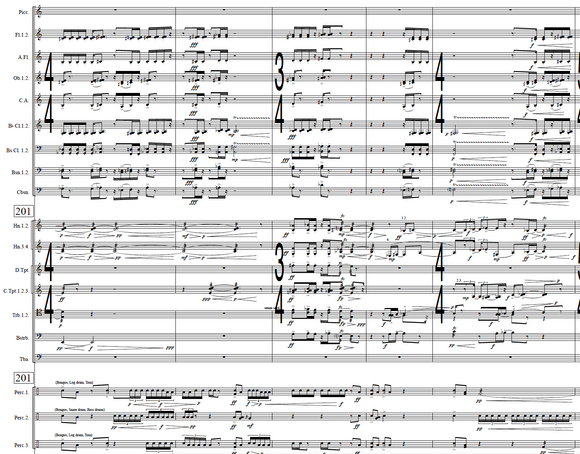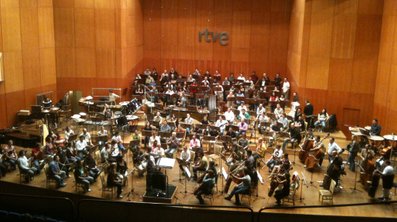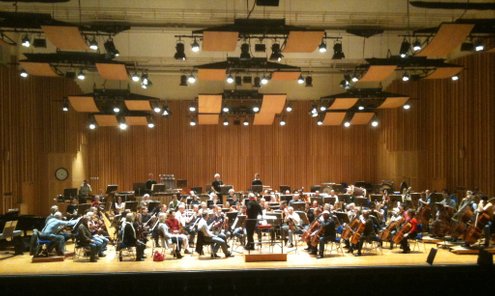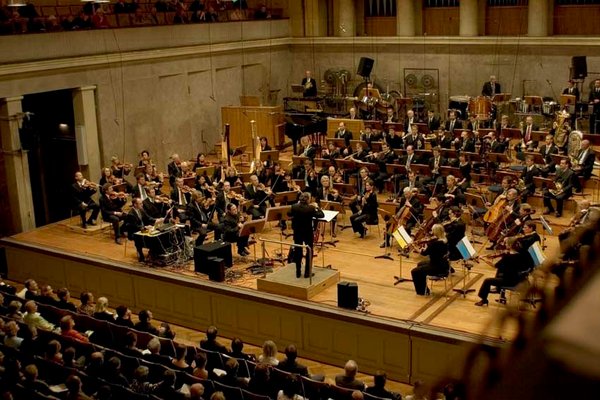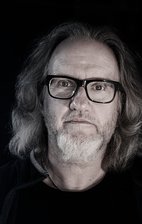Kent Olofsson - Composer
Orchestral works
1987 - 2014
Symphonies
Concertos
Other symphonic works
String Orchestra
Flute Orchestra
SYMPHONIES
Symphonie nr. 1 (2005-07)
Symphonie nr. 2 "Stalingrad Madonna" (2008)
Symphonie nr. 3 "Æther" (2009)
The Bells - a symphonic oratorio (2000/2004)
CONCERTOS
Chladni's Bow - for accordion, orchestra and electronics (2007)
Corde - for guitarist and orchestra (2002/06)
Hephaestus Forge - for percussion and orchestra (1996)
Concerto for two pianos and orchestra (1987)
Symphonies
Æther - symphonie III
for double choir and orchestra (2009)
Spanish Radio Orchestra, cond.
Recorded in Madrid 2010
Finalist piece in Queens Sophia Composition Competition XVII 2010
Stalingrad Madonna - symphonie II
for mezzo-soprano and orchestra (2008)
1. Siciliano: Vor dem Selbstbildnis 3:30
2. Scherzo I 6:30
3. Lento: Die Mutter Gottes von Stalingrad 15:00
4. Scherzo II: Aber erweckten sie uns, die unendlich Toten, ein Gleichnis 2:30
5. Schattenwaltz 1:30
Total duration: 29 min.
Finalist in the second international
Uuno Klami Composition Competition 2008.
First performances in Kouvola and Kotka, Finland,
on 18 and 19 September 2009 with the Kymi Sinfonietta
conducted by Yasuo Shinozaki.
The basic idea for the piece was born many years ago when I red about a picture called "Stalingrad Madonna". It was painted by a German soldier, lieutenant Kurt Reuber who was a German staff physician and Protestant pastor, during the Battle of Stalingrad. He was also a amateur painter. At Christmas 1942, in the trenches at the battlefield, he painted on the back of a Russian map a picture of the Madonna with the child in her lap. Reuber later wrote:
"The picture looks like this: the mother's head and the child's lean toward each other, and a large cloak enfolds them both. It is intended to symbolize 'security' and 'mother love.' I remembered the words of St.John: light, life, and love. What more can I add? I wanted to suggest these three things in the homely and common vision of a mother with her child and the security that they represent."
Reuber hung the drawing in his bunker for his unit celebration, which he described as a moment of Christian devotion shared by all the soldiers in his command. The soldiers went in and stood silent, too moved to speak, in front of the picture on the clay wall.
This scene, with the poor soldiers at Stalingrad, in the middle of hell on earth, expressed something deeply human and it affected me deeply. It became the starting point for the work.
The work is in five movement; the first one is a Siciliano with mezzo-soprano solo, Vor dem Selbstbildnis, with text by Arno Pötzsch who was a soldier during the war and also a poet.
The second movement, Scherzo I, is wild and fast, with rapid changes between instrument groups, gestures and sounds.
The third movement, entitled Die Mutter Gottes von Stalingrad, is the central part in the work, and has a duration as long as all the other five movement together. The soloist sings a few lines about the Stalingrad Madonna, from a poem of Arno Pötzsch, based on the words on the painting: "Licht, Leben, Liebe" (Light, Life, Love). The character is slow, sacral and thoughtful, with a focus on the sonority of the of the instruments.
The fourth movement is called Scherzo II "Aber erweckten sie uns, die unendlich Toten, ein Gleichnis", with text by R.M.Rilke, from his last sonet (But those eternally dead might, in ourselves, awaken some question: ...).
The last movement called Schattenwaltz, is a very short reminiscenes of the first movement, as a silent echo.
Recording with Katarina Böhm, Uppsala ´Kammarorkester conducted by Mats Rondin
I. Vor dem Selbstbildnis
Erschüttert schau ich dieses Bildnis an,
in dem du selbst, mein Bruder, dich bezeugst
und klaglos still doch jenes Grauen zeigst,
das ihr durchschrittet, alle, Mann für Mann.
Ich stehe ganz in dieser Augen Bann.
Was sahn die Augen? Ach, ich weiß, du schweigst!
Ich weiß, mein Bruder, daß du stumm dich beugst
dem dunklen Gott, der Tod und Leben sann.
Du bist verschollen in den Finsternissen,
allein dein Antlitz kam zu uns zurück
und sucht und zwingt für immer unsern Blick,
zwingt ihn nach innen, daß wir's da erfassen:
Auch wo wir schrein »Hast du mich, Gott, verlassen?«
hat Gott uns sterbend an sein Herz gerissen!
Arno Pötzsch
III.
Vor dem Weihnachtsmadonna von Stalingrad
Licht, Leben, Liebe schriebst du an den Rand
des Bilds der Mutter, die das Kindlein hegt,
Das ihr die Liebe in den Schoß gelegt;
sie birgt es tief in ihres Leibs Gewand.
Licht, Leben, Liebe - ach, nicht einer fand
mit seinen Sinnen, was ihn tiefst bewegt!
Lichtlos die Nacht, die Herzen haßerregt,
das arme Leben schon in Todes Hand -
das ist die Welt, in der die Männer feiern,
vereint, stumm in ungeklagter Not,
schier wie in Gräbern unterm Steppenwind!
Und einer wagt's und glaubt für sie an Gott,
reißt ihre Blicke hin zu diesem Kind,
weil Gott die Welt will in dem Kind erneuern.
Arno Pötzsch
IV.
Aber erweckten sie die unendlich Toten, ein Gleichnis,
siehe, sie zeigten vielleicht auf die Kätzchen der leeren
Hasel, die hängenden, oder
meinten den Regen, der fällt auf dunkles Erdreich im Frühjahr.
Und wir, die an steigendes Glück
denken, empfänden die Rührung,
die uns beinah bestürzt,
wenn ein Glückliches fällt.
Rainer Maria Rilke (from the 10th Elegy)
Symphonie I
for large orchestra (2005-07)
The Bells
a symphonic chamber oratorio for soloists, double choir, harp, keyboards, 2 contrabasses , percussion and electronics (2000/04-05)
Concertos
Written for Stefan Östersjö
First performance of part I "Fascia" by
Stefan Östersjö; charango and electric guitar and
Symphoniorchester des Bayerischen Rundfunks
conducted by Lothar Zagrosek in Munich during the Musica Viva festival 2004
First full performance by Stefan Östersjö and Malmö Symphony Orchestra conducted by Mario Venzago
Recorded by Stefan Östersjö and the Guthenburg Symphony Orchestra, conducted by Mario Venzago on Phono Suecia
FASCIA was awarded 3rd Prize in
"BMW Kompositionspreis der Musica Viva",
Munich 2002.
CORDE was granted the Grand Christ Johnson Prize 2009 from the Royal Swedish Academy of Music Stockholm
I. FASCIA
- for charango, electric MIDI guitar, orchestra and electronics
II. COLLAGENE/FASCIA II
- for glissentar, alto guitar and orchestra
III. COLLOIDE/FASCIA EPILOGUE
- for banjo, oboes, harp, percussion and violas
Cordes
for guitarist and orchestra (2002/06)
Other symphonic works
Dora Träumt
for small orchestra/large chamber ensemble (2007)
“Dora träumt” was commissioned as an opening piece for Schoenberg’s “Erwartung”.
The libretto for “Erwartung” was written by a young medical student, Marie Pappenheim and it has been claimed that the woman in the text, “Die Frau”, has connections to a case history by Freud, “Anna O.”. However, as Alexander Carpenter points out in his essay “Schoenberg’s Erwartung and Feudian Case Histories: A Preliminary Investigation”, there is another case with strong relationships to “Die Frau” in the text, a case history of Dora entitled “Fragment of an Analysis of a Case of Hysteria”. Freud’s analysis of the young girl’s dreams show clear connections to the scenes in “Erwartung”. Dora is dreaming that she is in a forest, an anxiety causing place, just like in “Erwartung”. And at a closer look the two texts are overloaded with shared dream symbols.
While Schoenberg in this work from 1909 uses free atonal and athematic composition methods the piece “Dora träumt” is composed with more strict techniques found later in the works of Scoenberg and Webern, like the use of twelve-tone rows and “Klangfarben”-melodies. Some very short fragments, a chord, some “Klangfarben”, is taken from “Erwartung” to form the basic material for “Dora träumt”.
Commissioned by Symfoniorkestern vid
NorrlandsOperan.
First performance: January 24 2008 in Umeå,
SONO, conducted by
Staffan Larson.
